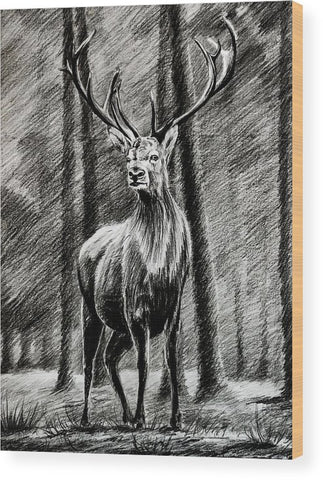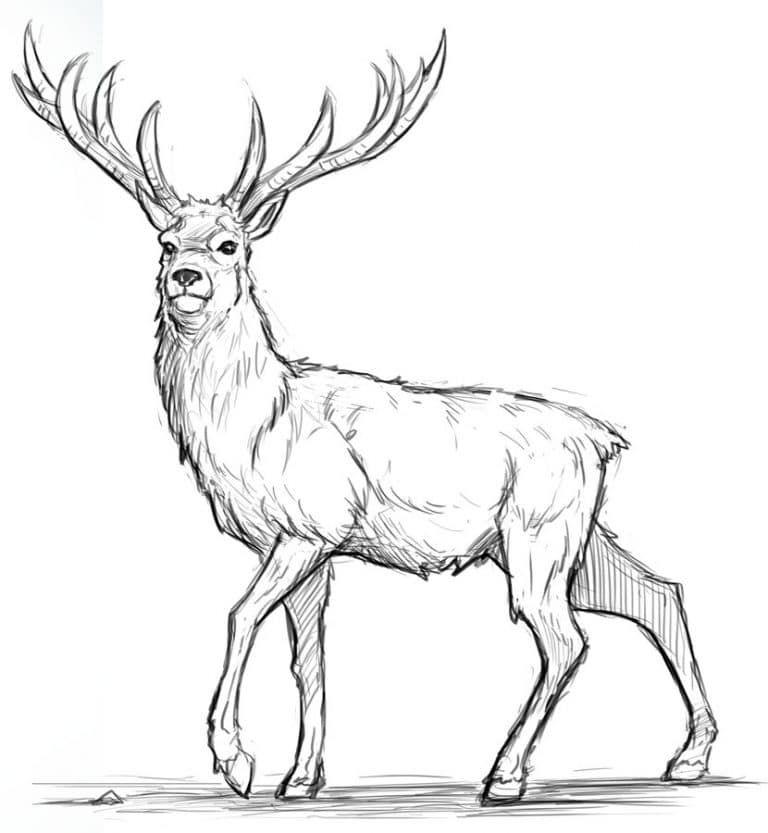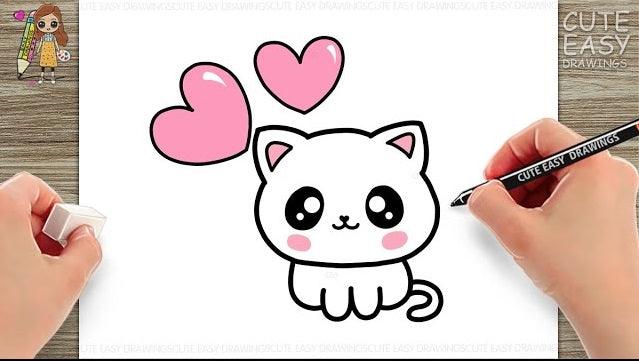Introduction to majestic deer drawing

Wildlife painting is a fascinating art form that allows artists to capture the beauty and essence of animals in their natural habitats. One of the most captivating subjects in wildlife painting is the majestic deer. Drawing deer requires a deep understanding of their anatomy, proportions, and unique features. In this step-by-step guide, I will take you through the process of creating a realistic deer painting, from sketching the basic shapes to adding details and bringing the painting to life with highlights and shadows.
The Beauty of Deer as Subjects in Wildlife Paintings

Deer have long been admired for their grace, elegance, and gentle nature. They symbolize both beauty and strength, making them a perfect choice for wildlife paintings. The intricate details of their fur, the majestic antlers, and the soulful eyes of deer make them a captivating subject for artists. By capturing the essence of these magnificent creatures on canvas, wildlife artists can convey a sense of awe and appreciation for the natural world.
The Importance of Observation and Reference Materials in Wildlife Painting

Observation and reference materials are crucial when it comes to wildlife painting. Spending time studying deer in their natural habitat allows artists to understand their posture, movement, and behavior. This firsthand experience provides valuable insights that cannot be obtained from photographs alone. Additionally, collecting photographs, sketches, and other reference materials allows artists to capture the intricate details of deer accurately. It is essential to immerse oneself in the world of deer to truly capture their essence on canvas.
Understanding the Anatomy and Proportions of Deer

To create a realistic deer painting, it is crucial to have a solid understanding of their anatomy and proportions. Familiarize yourself with the skeletal structure, muscles, and body proportions of deer. Pay attention to the shape of their heads, the length and curvature of their necks, and the placement of their legs. By understanding these fundamental aspects, you will be able to accurately capture the grace and elegance of deer in your paintings.
Step-by-Step Guide to Sketching the Basic Shapes of a Deer

Start by sketching the basic shapes of a deer using light, loose lines. Begin with a circle for the head and add an oval shape for the body. Connect the head and body with a curved line to represent the neck. Next, sketch the legs and refine them to capture the proportions accurately. Remember to pay attention to the placement and angles of the legs, as they play a crucial role in conveying the graceful stance of the deer. Once you are satisfied with the overall proportions, you can proceed to add more details to your sketch.
Adding Details and Refining the Sketch
Now that you have the basic shapes in place, it's time to add more details to your deer sketch. Start by adding the eyes, nose, and ears. Pay close attention to the placement and size of these features, as they contribute significantly to the overall expression and character of the deer. Next, add the antlers, taking care to depict the intricate branching patterns accurately. Refine the contours of the body, emphasizing the curves and muscles of the deer. Take your time with this step, as attention to detail is crucial in capturing the essence of the deer.
Choosing the Right Colors for a Realistic Deer Painting

Selecting the right colors is essential to create a realistic deer painting. Observe the colors of deer in different lighting conditions and environments. Pay attention to the variations in fur color, from light browns to darker shades. Use a combination of warm and cool tones to capture the subtle nuances of deer fur. Experiment with different color palettes to find the perfect balance that brings your deer painting to life. Remember to consider the background and lighting of your painting, as they will influence the overall color scheme.
Techniques for Capturing the Texture of Fur and the Sheen of Antlers

To capture the texture of deer fur, employ various techniques such as layering, stippling, and blending. Layering different shades of color creates depth and dimension, mimicking the softness and thickness of fur. Stippling, or creating small dots, can be used to depict the texture of short hair or stubble on the deer's face. Blending colors smoothly allows you to achieve a seamless transition between different areas of fur. To capture the sheen of antlers, use glazing techniques to create a subtle shine that reflects light.
Bringing the Deer to Life with Highlights and Shadows

Highlights and shadows are essential in bringing a deer painting to life. Use lighter shades or white to create highlights on areas that catch the light, such as the top of the head, shoulders, and antlers. Shadows should be darker and cooler in tone, adding depth and dimension to the painting. Pay attention to the direction of light and the way it interacts with the deer's body. By carefully placing highlights and shadows, you can create a three-dimensional effect that enhances the realism of your painting.
Framing and Displaying Your Wildlife Painting

Once you have completed your deer painting, it's essential to choose the right frame to enhance its presentation. Consider a frame that complements the colors and style of your artwork. A simple, elegant frame can draw attention to the painting itself without overpowering it. Additionally, consider the placement and lighting of your painting when displaying it. Natural or indirect lighting can bring out the colors and details of your artwork, creating a captivating display.
The Best Places to Find Inspiration for Wildlife Paintings: Wildlife Art Museums and Galleries

If you are seeking inspiration for your wildlife paintings, look no further than wildlife art museums and galleries. These institutions house a vast collection of wildlife paintings, including stunning depictions of deer. Take the time to visit these museums and galleries, study the works of renowned wildlife artists, and immerse yourself in the world of wildlife art. Observing the techniques and styles of other artists can inspire new ideas and approaches to your own artwork.
Collecting and Investing in Wildlife Art - Wildlife Prints and Art Prints

For those who appreciate wildlife art but may not have the means to acquire original paintings, collecting wildlife prints and art prints is an excellent alternative. Wildlife prints offer the opportunity to own high-quality reproductions of wildlife paintings, including stunning deer artwork. These prints can be a valuable investment, as they often appreciate in value over time. Consider starting a collection of wildlife prints to celebrate the beauty of deer and other animals in your own home.
Conclusion: Celebrating the Beauty of Wildlife through Art

Wildlife painting allows us to celebrate and appreciate the beauty of animals, such as the majestic deer. By understanding their anatomy, proportions, and unique features, we can create realistic and captivating deer paintings. Through observation, reference materials, and attention to detail, we can capture the essence and character of deer on canvas. Whether you are an aspiring artist or an art enthusiast, the art of wildlife painting is a wonderful way to connect with nature and express our admiration for the natural world.







Leave a comment
All comments are moderated before being published.
This site is protected by hCaptcha and the hCaptcha Privacy Policy and Terms of Service apply.